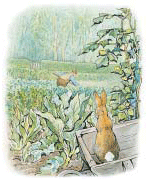http://www.asyura2.com/15/music16/msg/166.html
| Tweet |

Béla Bartók - Mikrokosmos
Claude Helffer, piano
Haakon Austbö, second piano
Mikrokosmos was originally designed as a collection of pieces for the beginning pianist, but over time it took on grander proportions, comprising 153 individual pieces that spanned the range of technical difficulty. Dividing into six volumes, it begins with pieces for beginners and progresses to those that challenge even the most accomplished pianist. That Mikrokosmos has become a viable progressive method is demonstrated by its ubiquity in the repertories of modern piano students, but its reputation rests on more than its technical and pedagogical applications; Bartók's work represents a varied and finely crafted catalog of twentieth century musical idioms. In Bartók's own words, it "appears as a synthesis of all the musical and technical problems which were treated and in some case only partially solved in the previous piano works." Perhaps chief among these musical problems was Bartók's attempted synthesis of Eastern and Western European musical traditions, particularly Eastern folk music with the Germanic tradition (as represented by Bach and Beethoven) and with the progressive harmonies of Claude Debussy.
The first 66 pieces in Mikrokosmos (Vols. 1 and 2) are dedicated to Bartók's son, Peter, for whose use they were originally intended. Many of these pieces are technical exercises, useful for developing finger and hand independence, as well as hand span; however, they are also of interest for their musical language. Hungarian folk tunes, pentatonic, whole-tone and modal harmonies, as well as more adventurous octatonic chromatic scales all form the basis for these short pieces.
Volumes 3 and 4 make up numbers 67 through 121. These pieces display increased harmonic complexity and technical demands. Bartók employs more polymodes (the use of different modes, or keys, simultaneously), along with octatonic and diatonic scale fragments to construct these pieces. The compositions in the third and fourth volumes are also important because they betray the influence of Franz Liszt, particularly in terms of tone color; Bartók wrote of his desire, in these pieces, to "poetically color the piano tone."
The final volumes (5 and 6) of the Mikrokosmos were intended as concert pieces for professional pianists. They differ from the preceding pieces in many respects: their contrapuntal texture is more dense (four parts), the melodic and harmonic material is more characteristic of Bartók's non-pedagogical works, and rhythmic structures are much more complicated and include vigorous syncopations and Bulgarian dance rhythms.
While Bartók's intention to synthesize Bach, Beethoven, and Debussy was perhaps not fully realized, Mikrokosmos nonetheless compares well with some of Bach and Debussy's ostensibly pedagogical keyboard works. Like Bach's Inventions or Debussy's Études, for example, Mikrokosmos is not merely a work of practical value, but also a work of art with much purely musical substance. [Allmusic.com]
Art by Jean Dubuffet
ミクロコスモス (バルトーク)
http://ja.wikipedia.org/wiki/%E3%83%9F%E3%82%AF%E3%83%AD%E3%82%B3%E3%82%B9%E3%83%A2%E3%82%B9_(%E3%83%90%E3%83%AB%E3%83%88%E3%83%BC%E3%82%AF)
|
|
|
|
投稿コメント全ログ コメント即時配信 スレ建て依頼 削除コメント確認方法
|
|
 スパムメールの中から見つけ出すためにメールのタイトルには必ず「阿修羅さんへ」と記述してください。
スパムメールの中から見つけ出すためにメールのタイトルには必ず「阿修羅さんへ」と記述してください。すべてのページの引用、転載、リンクを許可します。確認メールは不要です。引用元リンクを表示してください。